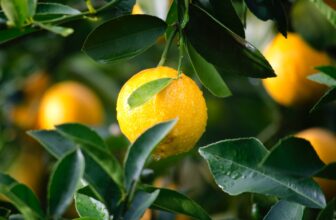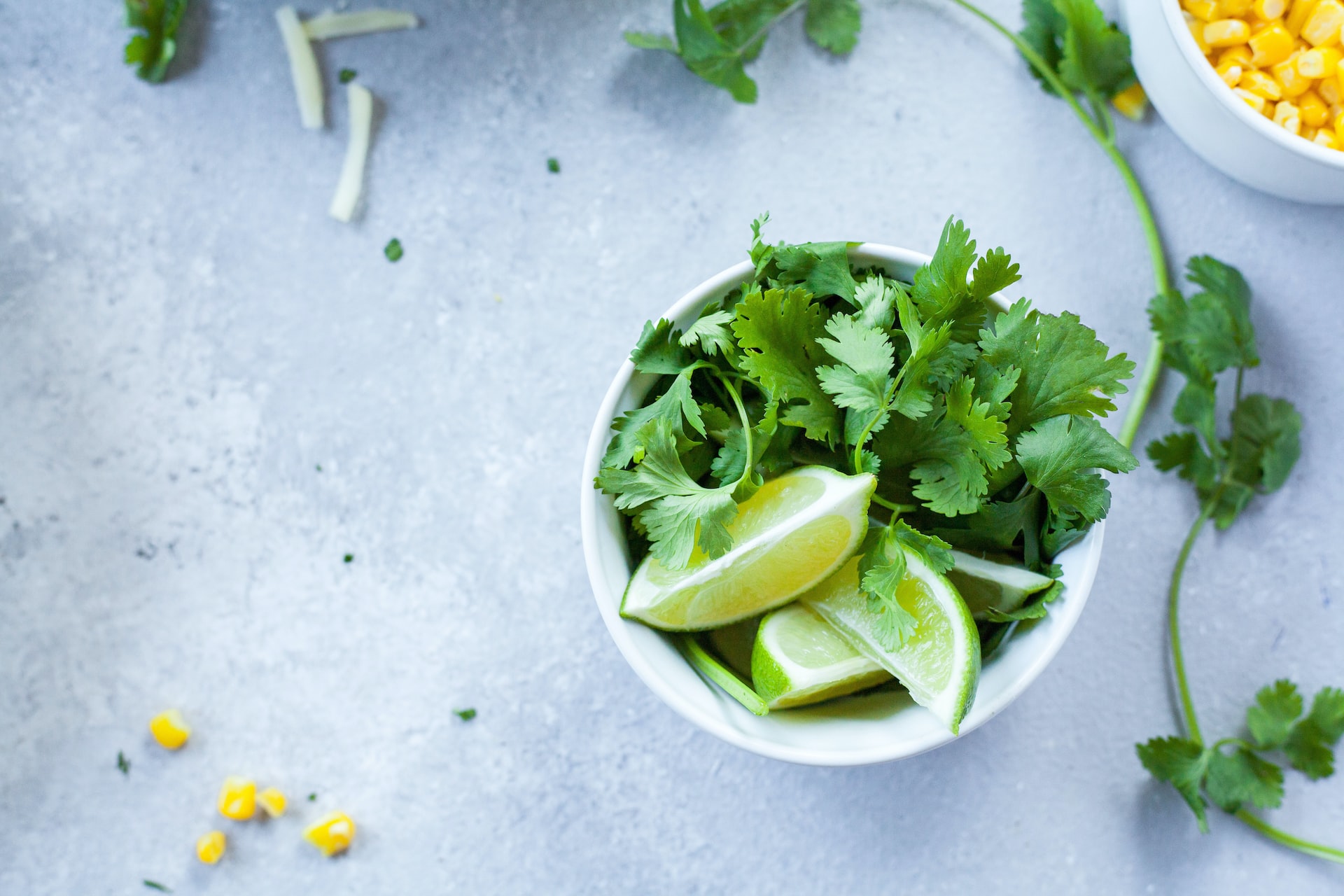
Table of Contents
Coriander or Cilantro (Coriandrum sativum) is an aromatic, fast-growing annual herb that is a well-known staple ingredient, especially in Chinese, Thai, South Asian, and Middle Eastern cuisines. It’s popular for being rich in antioxidants and many culinary uses along with health benefits.
Here is a guide to help you grow your own coriander plants all by yourself!
What is Coriander?
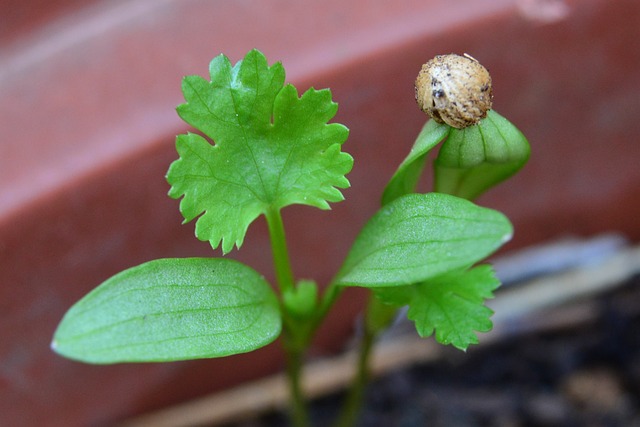
The earliest cultivation of coriander as a spice crop was in the Anatolian region which is present-day Turkey. An Egyptian papyrus, around 2500 BCE refers to coriander as a medicinal plant and in Israel, the coriander’s small brown, striped globe-like seed was found in 8000-year-old caves. There are references to coriander in ancient Sanskrit and the Holy Bible compares the manna from heaven to the likeness of coriander seed.
The key feature of coriander is that all parts of the plant are edible, and it can also be used as both an herb and a spice. The fresh, aromatic leaves and stalks are usually used as an herb in salads and as a garnish, whereas the dried seeds are ground to a powder and are used as a spice to flavor dishes.
Coriander is an easy-to-grow plant with low maintenance and ideally, one of the best choices for an indoor potted plant as it brings out an exquisite, ornamental look to your kitchen tops or windowsills.
Growing and Caring for Coriander
Here are some important to tips to consider when growing and caring for coriander.
Planting Coriander
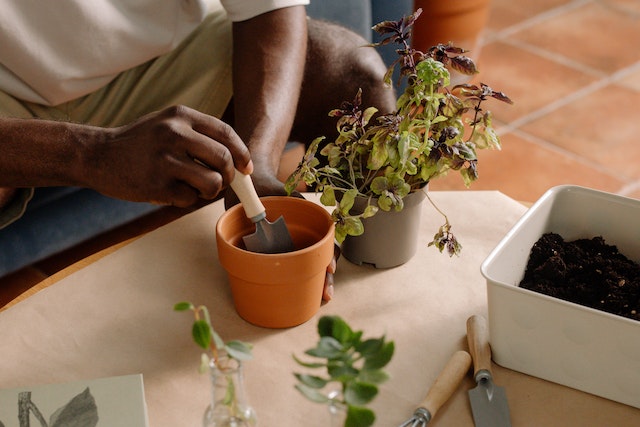
Seeds can be sown outdoors in multi-cell trays or directly to well-drained, moist soil in pots, ideally 6 – 12 inches. For a successful sow, scatter the seeds in a thin layer approximately 30 cm apart and half to 1 inch deep into the soil.
Water the pot gently to maintain the moisture of the soil. Seeds will germinate within 2 to 3 weeks. Once germinated, thin out the seedlings to 20-25 cm apart to ensure full growth of the plant. To have a constant supply of fresh leaves, sow every 6-8 weeks.
Harvesting
The method for harvesting depends on the part of the plant that is required to be harvested.
· How to Harvest the Herb (Leaves and Stalk)
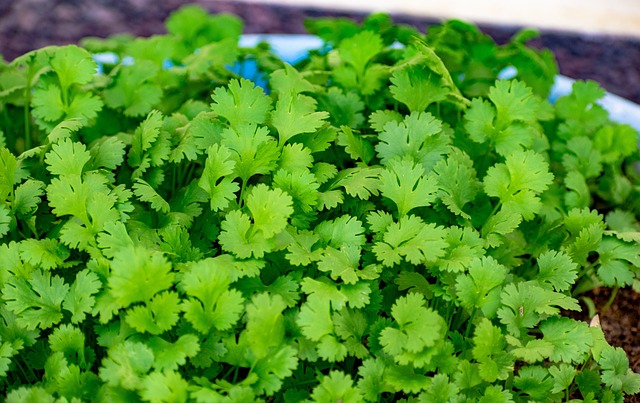
Coriander leaves and stalks can be harvested when the plant is grown to a height of 4-6 inches. The bright green leaves will be tender with a less bitter taste during this time. The stems of a coriander plant at times may be more pungent than the leaves.
Coriander flowers can be harvested and used to make salads. Harvested herbs can be used fresh or stored in a sealable bag and frozen for later use.
· How to Harvest the Seed
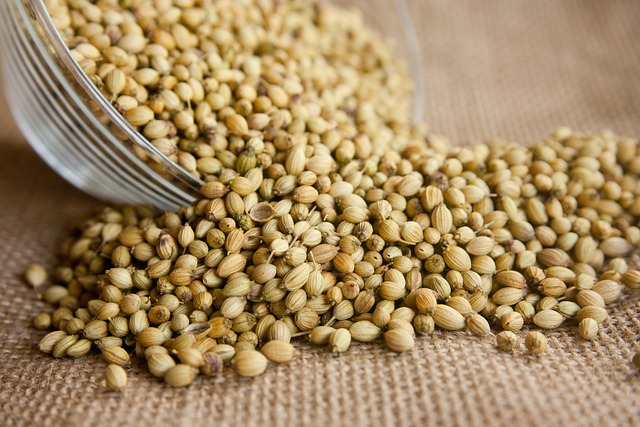
To harvest seeds, allow the plant to flower. After flowering, once the seeds have grown and the plant turns brown to wither away, cut and place the seed heads in a large paper bag and hang it upside down to dry out.
After a few weeks, the seeds may have fallen off into the bag and if necessary, shake the bag gently to allow all the remaining seeds to fall out. The seeds may be further dried and stored in a sealed container for cooking purposes or be sowed again for a new batch of coriander.
How to Care for Coriander
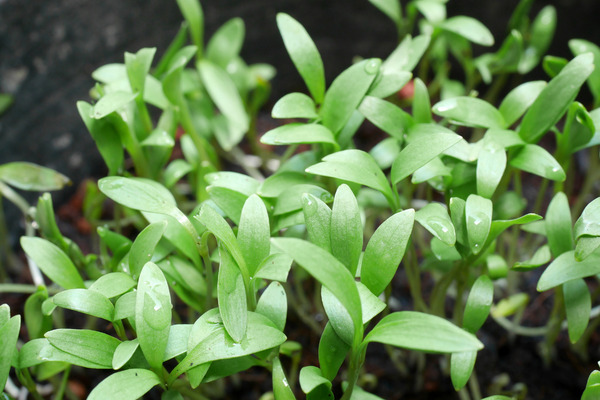
Coriander is a fast-growing plant that can produce a great harvest. Providing the right growth conditions will ensure healthy growth and harvest throughout. A few tips on how to care for your plant are listed below.
Water
Coriander plants have moderate water requirements and should be watered regularly, especially during dry spells. The soil should be kept evenly moist but not waterlogged. It’s a good idea to check the soil moisture level regularly by sticking your finger about an inch into the soil.
If it feels dry, it’s time to water. If the soil is too wet, allow it to drain before watering again. In general, coriander plants prefer well-draining soil and do not tolerate standing water.
Light
Coriander grows best in full sun or partial shade. It can tolerate some shade, but it will grow best and produce more leaves if it receives at least 6 hours of direct sunlight per day. If you are growing coriander indoors, be sure to place it in a location that receives plenty of natural light or use artificial grow lights to supplement the light it receives.
In addition to providing the plant with enough light, it’s important to make sure it receives the proper amount of water and nutrients to encourage healthy growth.
Temperature and Humidity
Coriander is a warm-season herb that grows best in temperatures between 60 and 70 degrees Fahrenheit (16-21 degrees Celsius). It can tolerate some fluctuations in temperature, but it may slow down or stop growing if the temperature gets too hot or too cold. In general, coriander prefers a well-drained soil with a pH between 6.0 and 6.8.
As for humidity, coriander prefers a relatively humid environment, especially when it is young and still establishing itself. If the air is too dry, the leaves may become dry and brittle. To increase humidity around your coriander plants, you can try misting the leaves regularly or placing a humidifier near the plants.
You can also try placing a tray filled with water and pebbles near the plants, which will help to increase the humidity in the surrounding area.
Soil
Coriander grows best in a well-draining soil with a pH between 6.0 and 6.8. A rich, loamy soil that’s high in organic matter will provide the best growing conditions for coriander. The soil should also be moist but not waterlogged, as coriander does not tolerate standing water.
If your soil is too heavy or clay-like, you can improve the drainage by adding compost or other organic matter to the soil to help break it up and make it more porous.
In addition to proper drainage, it’s important to provide your coriander plants with the nutrients they need to grow. A balanced fertilizer can help to provide the necessary nutrients, but you can also use compost or other organic matter to enrich the soil naturally.
If you’re growing coriander in pots, be sure to use a high-quality potting mix that’s specifically formulated for herbs. This will help to ensure that your plants have the proper drainage and nutrients they need to thrive.
Fertilizer

Coriander is a relatively light feeder and does not require a lot of fertilizer to grow well. In general, a balanced fertilizer with a ratio of approximately equal parts of nitrogen, phosphorus, and potassium (NPK) will be sufficient for most coriander plants. You can use a fertilizer with an NPK ratio of 20-20-20 or something similar.
It’s generally best to fertilize coriander plants every two to four weeks, depending on the age and size of the plant. Young, newly transplanted plants may benefit from more frequent fertilization, while established plants may need fertilizer less often.
If you prefer to use organic fertilizers, you can try using compost, well-rotted manure, or a liquid seaweed fertilizer. These types of fertilizers will help to provide your coriander plants with the nutrients they need while also improving the structure and fertility of the soil.
It’s important not to over-fertilize coriander plants, as this can lead to excessive growth and a decrease in the production of leaves, which are used for cooking. It’s generally best to follow the manufacturer’s instructions when using fertilizers and to start with lower amounts, gradually increasing the amount as needed.
Common Problems When Growing Coriander
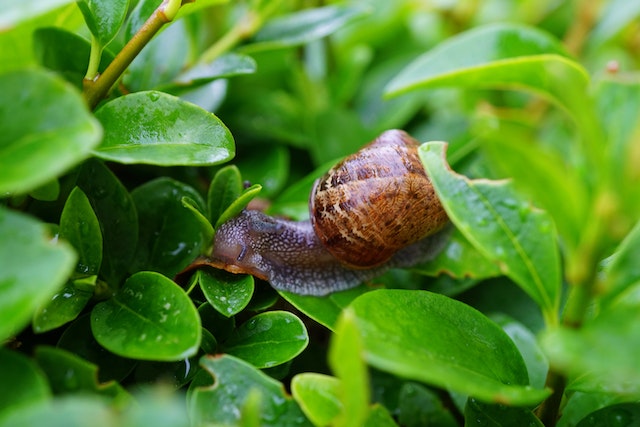
Pests – Slugs and Snails
Coriander is generally resistant to most pests, but there are a few insects that can occasionally cause problems for coriander plants. Some common pests that may affect coriander include:
- Aphids: These small, soft-bodied insects can be found on the stems and undersides of coriander leaves. They can weaken the plant and reduce its vigor, and they can also transmit diseases.
- Slugs: Slugs can be a problem for coriander plants, especially in damp or humid conditions. They can chew holes in the leaves and stems of the plant, causing damage and reducing its vigor.
- Thrips: These small, slender insects can cause damage to coriander plants by feeding on the leaves, which can cause them to become discolored or distorted.
To control pests on coriander plants, you can try the following:
- Remove and destroy any infected plants or plant parts.
- Keep the area around your plants clean and free of debris, as this can help to reduce the number of pests that are attracted to your plants.
- Use row covers or other physical barriers to keep pests away from your plants.
- Use an organic pest control method such as neem oil or pyrethrin, following the manufacturer’s instructions carefully.
- If the infestation is severe, you may need to use a chemical pest control product. Be sure to follow the manufacturer’s instructions carefully and take precautions to protect yourself and the environment.
It’s generally best to try to control pests using organic methods whenever possible, as chemical pesticides can be harmful to humans, pets, and the environment.
Bolting
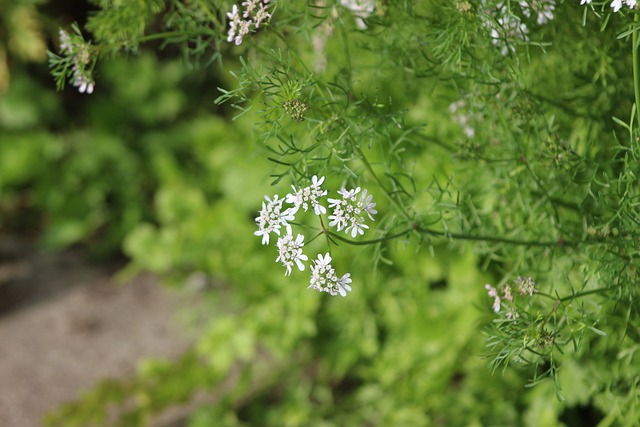
Bolting is a term used in agriculture to describe the process of a plant producing flowers and seeds rather than vegetative growth (leaves, stems, etc.). In most cases, bolting is a natural process that occurs when a plant reaches a certain age or stage of development. However, bolting can also be triggered by environmental factors such as temperature fluctuations or changes in the amount of light the plant receives.
In some cases, bolting is desirable, as it allows the plant to produce seeds and reproduce. However, bolting can also be a problem for certain crops, as it can cause the plant to produce fewer leaves or flowers, reducing its yield or quality.
There are several strategies that can be used to prevent or delay bolting in crops:
- Planting at the right time: Planting at the appropriate time for your location can help to prevent bolting. In general, it’s best to plant cool-season crops (such as lettuce and spinach) in the spring or fall, when temperatures are cooler. Warm-season crops (such as tomatoes and peppers) should be planted in the summer, when temperatures are warmer.
- Providing the right amount of light: Proper lighting can also help to prevent bolting. Some crops, such as lettuce and spinach, prefer cool, shaded conditions, while others, such as tomatoes and peppers, prefer warmer, sunnier conditions.
- Using a bolt-resistant variety: Some varieties of crops are more resistant to bolting than others. If you are having problems with bolting, you may want to try planting a bolt-resistant variety of the crop.
- Controlling temperature fluctuations: Sudden changes in temperature can cause plants to bolt, so it’s important to try to maintain a consistent temperature for your crops. This can be especially challenging in outdoor environments, where temperatures can fluctuate significantly from day to day.
- Using a growth regulator: Certain chemicals, such as cytokinins, can be used to delay or prevent bolting in certain crops. However, these chemicals can be expensive and may not be suitable for all crops, so it’s important to do your research before using them.
Rotting of Roots
Rotting roots in coriander plants can be caused by several factors, including over-watering, poor drainage, and soil-borne diseases. When the roots of a coriander plant rot, the plant may show signs of distress, such as yellowing leaves, wilting, or reduced growth. In severe cases, the plant may die.
To solve the problem of rotting roots in coriander plants, you may need to take the following steps:
- Improve drainage: Poor drainage can lead to waterlogged soil, which can cause the roots of coriander plants to rot. To improve drainage, you can try adding compost or other organic matter to the soil to help break it up and make it more porous.
- Adjust watering: Over-watering can also cause the roots of coriander plants to rot. To prevent this, be sure to water your plants only when the soil is dry to the touch and avoid letting the soil stay soggy for extended periods of time.
- Use a well-draining soil mix: When planting coriander, be sure to use a well-draining soil mix that is specifically formulated for herbs. This will help to prevent the roots from rotting due to excess moisture.
- Avoid planting in poorly-draining areas: If your soil has a tendency to stay wet or soggy for long periods of time, it may be best to avoid planting coriander in those areas. Instead, choose a location that has well-draining soil.
- Remove and destroy infected plants: If you suspect that your coriander plants have rotting roots, it’s important to remove and destroy the infected plants as soon as possible to prevent the problem from spreading to other plants.
By following these steps, you should be able to solve the problem of rotting roots in your coriander plants and help them to grow and thrive.
Health Benefits of Coriander
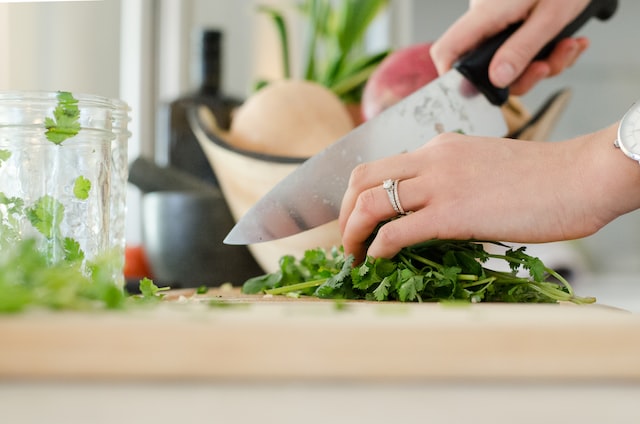
As we all know, coriander is a famous and widely used herb and spice in the culinary world. While it is popular for its flavor and aroma, coriander also has several impressive health benefits that are not known by many.
Rich in Antioxidants
Coriander is shown to have several antioxidants which aid to fight inflammation in the body. It is also proven to have anti-cancer, immune-boosting and neuroprotective effects.
Rich in Vitamins and Minerals
The leaves and seeds of coriander contain a significant amount of Vitamin K, which plays an important role in keeping your bones healthy as it helps repair bones and prevents diseases such as osteoporosis.
Lowers Risks of Heart Diseases
Coriander is studied to have multiple effects to improve heart health and to reduce risks of heart-related diseases. As per scientific research, coriander extract acts as a diuretic, which helps to flush out extra sodium and water in your body which helps to reduce blood pressure in your body. Coriander further aids in the reduction of “bad cholesterol’ (LDL), reducing the risk of coronary heart diseases.
Lowers Blood Sugar Levels
Coriander seeds play a significant role in reducing blood sugar as it promotes enzyme activity which causes the reduction of the level of glucose in the blood.
Frequently Asked Questions about Coriander
Yes, coriander and cilantro are the same plant. Coriander refers to the seeds of the plant, while cilantro refers to the leaves.
Coriander has a unique, citrusy flavor that is often described as being a combination of lemon and sage. It is often used to add a fresh, zesty flavor to dishes. Some people love the flavor of coriander, while others find it to be too strong or soapy.
There are no known negative effects of consuming coriander on a daily basis. In fact, coriander has a number of potential health benefits, including reducing cholesterol, controlling blood sugar, reducing anxiety, and improving digestion.
Some people may be allergic to coriander and may experience allergic reactions when they consume it. Symptoms of a coriander allergy may include skin rash, hives, itching, sneezing, runny nose, and difficulty breathing.
It’s generally safe to consume coriander in moderate amounts, whether cooked or raw. However, as with any food, it’s important to wash coriander thoroughly before consuming it to remove any dirt or contaminants that may be present.
Wrapping Up
Coriander is one of the most elegant and versatile herbs out of the many that’s already available. If you are a chef or a food lover, you may already know all about coriander as in fact it is the go-to herb the moment you think of any Indian, Thai, Chinese and many other cuisines. The delectable, fragrance and freshness that coriander offers will simply upgrade your dish to a world class meal.
Having your own coriander plant will not only help you create decadent dishes but will also be a vibrant decorative element to your home. We hope these few simple tips will help you to start growing your own coriander at home!






